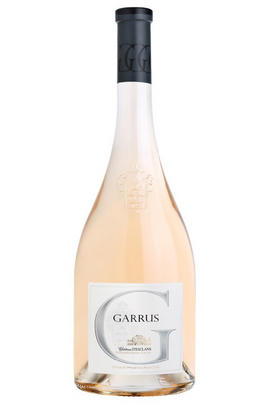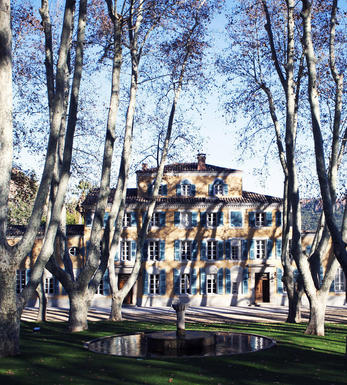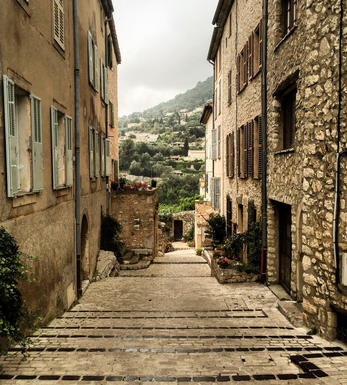
2015 Château d'Esclans, Garrus Rosé, Côtes de Provence

Critics reviews
2015 Chateau d’Esclans, Garrus, Cotes de Provence is a wine which I feared I would never taste. I have tracked this wine over the years through the 18s, 18.5s and into the 19s and last year I sensed we were on the brink of perfection, but I couldn’t push myself into a perfect score. When I tasted the 2015 wines out of barrel last year I was convinced that they were even finer than the ‘14s and this meant that a perfect Garrus was possible. Now that the wine is bottled and has had a chance to settle, I am certain that we have found a superstar release. As always Garrus has more depth and power than Les Clans and in 2015 it seems to flaunt its 80+ year old Grenache vine credential on its sleeve. This wine might have the palest of coral colours but it is made from imperial red fruit. The alcohol (14% vol.) informs you that this is not an ephemeral rose, unlike so many. This is a wine which is thrumming with bass power and yearning to be set free from its restraints. It has a depth of fruit on the nose which I have not seen before at this estate. Savoury, chiselled, powerful and majestic, Garrus will, one day, be mentioned in the same breath as wines like La Tache, Latour, Vielles Vignes Francaises and Le Montrachet. I don’t know when that might be but in the meantime I will be serving this rose at the same table as these other great wines in the knowledge that it has finally lived up to its promise.
Matthew Jukes, matthewjukes.com
This is a serious wine with a lighter brighter side. Its wood aging adds spice to the ripe red fruits and brings out the concentration and intensity. It is, in its way, an unexpected side of Provence rosé, emphasizing richness and complexity. But it all comes together: a fine wine that, after a year of aging, is ready to drink.
Roger Voss, Wine Enthusiast (Jan 2017)
About this WINE

Chateau d'Esclans
Situated in the cool hills in the heart of Provence, Château d’Esclans has been owned and run by Sacha Lichine since 2006. Along with Patrick Leon (formally the Managing Director of Mouton Rothschild), Sacha set out to craft a world-class brand that aims at producing the greatest rosé on the planet.
This elevated site is most famous for its old-vine Grenache, much of which was planted in the early part of the 20th century. These vines are hand-picked as close to sunrise as possible and blended with equally cared for Vermentino. The top cuvées are then oak aged and capable of aging and improving for years.

Côtes de Provence
Reputedly the source of Louis XIV’s favourite wines, Côtes de Provence lies in the south-east of Provence and overlaps with the Var department. Coteaux Varois is sandwiched between two parts of the Côtes de Provence appellation; the enclaves of Cassis, Bandol and Palette are also nestled between pockets of land to the south and east of Côtes de Provence.
Eighty percent of the appellation’s production is dry rosé wine, distinguished by an inimitable pale-pink colour and elegant flavours. Cinsault and Grenache dominate in the region’s rosés, augmented with the occasional dash of the local, intensely aromatic Tibouren. The AOC regulations stipulate that at least 20 percent of a rosé blend must come from wine made using the saignée (literally, ‘bleeding’) method.
The remaining 20 percent of the region’s production is dedicated 15 percent to red and five percent to white wines. Following the Phylloxera epidemic known as the Great French Wine Blight in the late 1800s, much of Côtes de Provence was replanted with the high-yielding Carignan vine.
Since the late 1990s, a host of new, small, dynamic estates has started to focus on a new-wave style of red wines, characterised by full-fruit ripeness, concentration, and soft tannins and using ameliorateur varieties such as Syrah and Cabernet Sauvignon, which are gradually replacing the once ubiquitous Carignan.

Grenache/Garnacha
Grenache (Noir) is widely grown and comes in a variety of styles. Believed to originate in Spain, it was, in the late 20th century, the most widely planted black grape variety in the world. Today it hovers around seventh in the pecking order. It tends to produce very fruity, rich wines that can range quite widely in their level of tannin.
In many regions – most famously the Southern Rhône, where it complements Syrah and Mourvèdre, among other grapes – it adds backbone and colour to blends, but some of the most notable Châteauneuf du Pape producers (such as Château Rayas) make 100 percent Grenache wines. The grape is a component in many wines of the Languedoc (where you’ll also find its lighter-coloured forms, Grenache Gris and Blanc) and is responsible for much southern French rosé – taking the lead in most Provence styles.
Found all over Spain as Garnacha Tinta (spelt Garnaxa in Catalonia), the grape variety is increasingly detailed on wine labels there. Along with Tempranillo, it forms the majority of the blend for Rioja’s reds and has been adopted widely in Navarra, where it produces lighter styles of red and rosado (rosé). It can also be found operating under a pseudonym, Cannonau, in Sardinia.
Beyond Europe, Grenache is widely planted in California and Australia, largely thanks to its ability to operate in high temperatures and without much water. Particularly in the Barossa Valley, there are some extraordinary dry-farmed bush vines, some of which are centuries old and produce wines of startling intensity.


Buying options
Add to wishlist
Description
Garrus, Ch. D’Esclan’s top cuvee, is a serious Rose wine which delivers great complexity and concentration from vines averaging 80 years of age. Pale salmon in colour with an onion skin hue, aromas of wild strawberry, fennel and raspberry leaf mingle with a savoury undertone. A lovely freshness runs across the palate, offset by a gentle creamy texture derived through oak treatment. Concentrated throughout, detailled wild red fruit flavours sit on the mid-palate amidst a gentle spiciness and herbal character. Finishing with profound tension and balance, the 2015 Garrus is testament to the quality of this estate, to be enjoyed from 2017 – 2019.
Chris Lamb, Private Account Manager, Berry Bros. & Rudd (Mar 2017)
wine at a glance
Delivery and quality guarantee